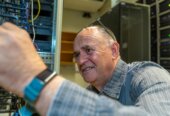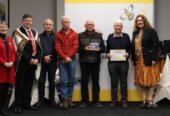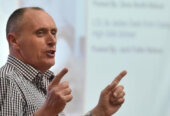Here’s an idea: did New Zealand make a big mistake on June 8, 1987? That was the year and the month, of course, that New Zealand banned anything nuclear from our island. In the aftermath of the Greenpeace sinking - and with the anti-Vietnam war movement along with a strong cultural environmentalism building - Labour PM David Lange spearheaded the New Zealand Nuclear Free Zone Act.
A recent book by computer scientist J. Storrs Hall, however, has caused me to question whether this was the best idea. The book - ”Where’s my flying car?” - is a memoir of “future past”; an exploration of why 2021 looks nothing like the utopian, technologically enabled future imagined by science fiction writers (and politicians) of the 50s and 60s. A lot of the discussion focuses on that fact that maybe we got the shape of the sheer technological advancement of the 21st century wrong. As Peter Thiel says: “We wanted flying cars, instead we got 140 characters.” But is being able to beam your presence through fibre optic cables across the world a suitable replacement for a hovering Prius?
Storrs Hall argues no - and, what’s more, that the slowing pace of technological advancement from the 70s onwards is due not to infeasibility but rather cultural forces and bureaucratic reluctance. His main target is “green fundamentalism” - a misanthropic quasi-religion that believes human agency over the natural world is fundamentally bad - and that is quick to dismiss technological advancements on the grounds that they are messing with nature.
Storss Hall also raises the question of whether nuclear power was perhaps unjustly demonised by these culture forces. Acute Radiation Syndrome killed 0 –that’s right - 0 people at Fukushima, while the radiophobic evacuation and displacement killed over 1000. Chernobyl - that other big nuclear disaster - killed 43 people.
Renewable energy is getting much cheaper, which is a good thing. But there are still inefficiencies; solar power generates the most Watts at midday, which is when we least need energy. Wind and Hydro are just as temperamental. Nuclear power produces no greenhouse gas emissions and yet runs all day, every day.
In New Zealand, coal use has recently jumped in line with a decrease in hydro capacity - up to 1,031 GWh from coal in March 2021. The government’s proposed Lake Onslow “pumped hydro” battery would cost around $4 billion and hold a capacity of 5000 gigawatts. In Wyoming, Bill Gates is funding the construction of a Natrium-cooled nuclear reactor - part of a new generation of smaller, safer, cheaper, and less wasteful nuclear power plants - the first real innovation in the area in decades. The cost is an estimated $1 billion USD.
For the same cost as the pumped hydro scheme, New Zealand could build two, maybe three such smaller nuclear reactors - generating about 1116GWh a month; enough to cover the coal shortfall, certainly. Gates, for his part, says nuclear energy will “absolutely be political palatable again.” In fact, despite the negative cultural lens on nuclear power, it’s actually one of the safest forms of energy generation. According to Our World in Data, there were 0.07 deaths per TWh of power generated for nuclear energy, in contrast with 32.72 for Brown Coal, 24.62 for Coal and 2.82 for gas. Solar has the lowest at 0.02.
Although New Zealand has nuclear-free legislation, it covers only nuclear-propelled ships, nuclear explosive devices and radioactive waste. It doesn’t explicitly prohibit the development of a power station - only popular opinion does that. Is nuclear power the answer? Maybe. Maybe not. But it does seem counter-productive that we’re not even asking the question.









